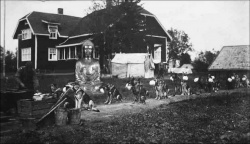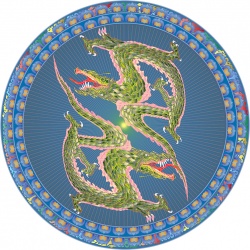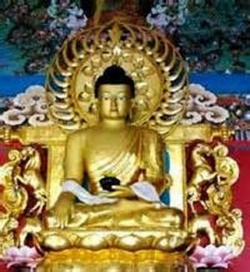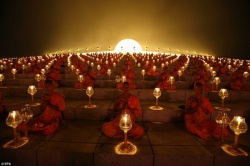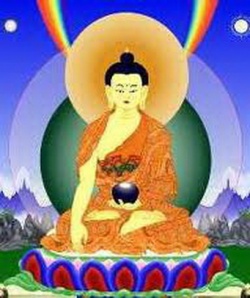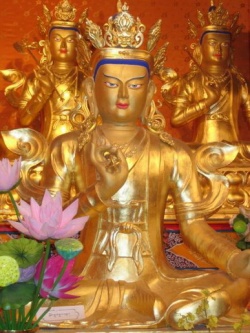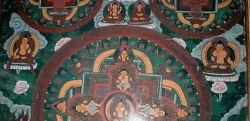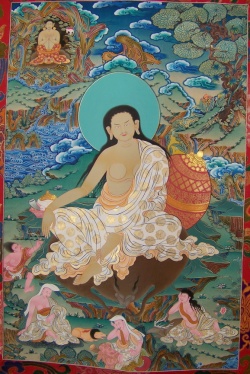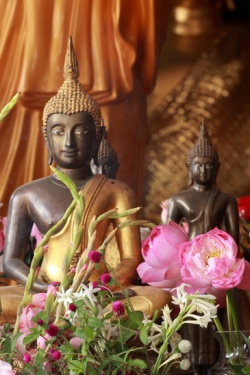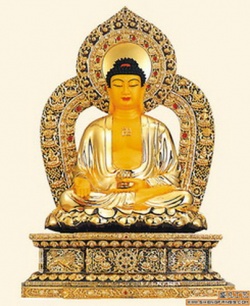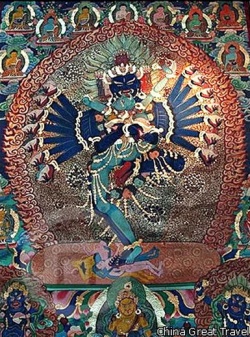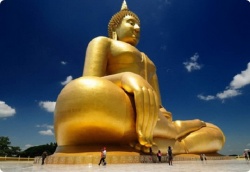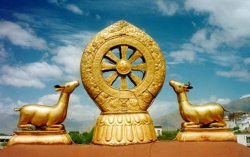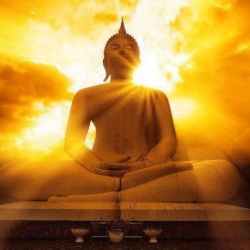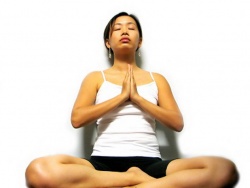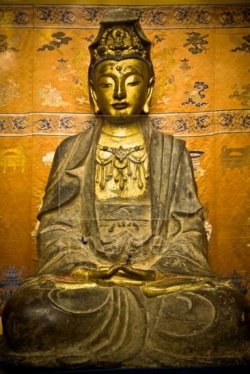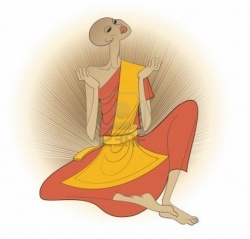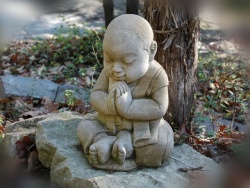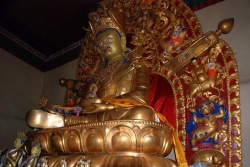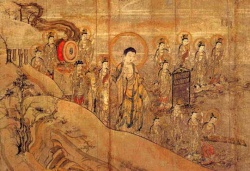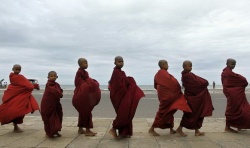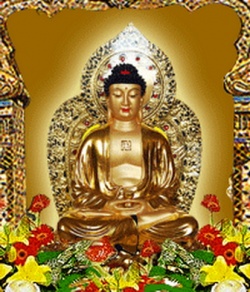Taiwan’s Socially Engaged Buddhist Groups by David Schak and Hsin-Huang Michael Hsiao
Taiwan’s Socially Engaged Buddhist Groups
David Schak and Hsin-Huang Michael Hsiao
Abstract:A new religious phenomenon in Taiwan is the advent of socially engaged Buddhism, Buddhist groups committed to working for the betterment of society and the welfare of the poor and the ill. The growth of these groups has been concomitant with democratisation, membership increasing very rapidly in the 1990s so that self-identification with Buddhism has now reached 13% of the adult population. This article examines the roles undertaken by members of these groups in society and asks whether they are contributing to the growing civil society.
The past forty years, and particularly the last decade, have seen a remarkable growth in Buddhism in Taiwan. Although conventional Buddhist groups such as Amithaba have prospered, the most spectacular growth has been in a home-grown, socially engaged variety. These groups describe themselves as renjian fojiao , which translates literally as “terrestrial”, i.e. “this world”, Buddhism, but is usually rendered “engaged” or “socially engaged”. Another commonly used term is rushi, “entering” or “being in” the world, as opposed to chushi, “leaving the world”. This reflects a belief that the “Pure Land” is this earth, and that their mission is to purify it. There are six groups which make some claim to be socially engaged Buddhist groups in Taiwan, and together claim over 20% of Taiwan's adult population as members. This paper will examine socially engaged Buddhist groups and their activities in Taiwan.
The paper derives from two projects: the first compiled publicly available information on the various socially engaged Buddhist groups; the second examines the resurgence of Buddhism in Taiwan and its potential to create social capital and contribute to Taiwan's growing civil society[1]. It does so in light of Robert Putnam's observations of religious groups in the United States. Putnam states that the 1950s and 1960s voluntarism of mainline Protestant groups in both work and contributions was at a level far outweighing their proportion of the American population, and they made significant contributions to both social capital and civil society[2]. Others challenge his claim that mainline Protestants are the major volunteers in American society[3], however, they are in accord with him regarding the role religion plays in generating social capital. The project will compare members of the socially engaged Buddhist groups with the general public with regard to the creation of social capital and the strengthening of civil society.
The six groups are, roughly in order of size, Tzu Chi Gongdehui (Ciji gongdehui, Compassionate Relief Merit Society), Fo Guang Shan (Buddha Light Mountain), Fagushan (Dharma Drum Mountain); Chung Tai Chan Szu (Zhongtai chansi, Chan World of Chung Tai), Ling Jiou Shan (Lingjiu Mountain) and Fu-chih (Fuzhi).[4] The social engagement of the groups falls roughly into four categories—education, culture, philanthropy and environmental protection—but each group has different emphases and a different mix of services. They agree, however, that the Pure Land will not be in some faraway paradise but on this earth and in this world, and they see as their mission as preparing the world—i.e. society—for its realisation.
Religious resurgence in Taiwan
As Taiwan has become more prosperous, there has been a resurgence of religious activity in general, Buddhism in particular, whether counted in building places of worship, membership or donations[5]. Attendance at the important Matsu temples has increased strongly; moreover, the predominance of the Peigang festival has been challenged by Matsu temple committees elsewhere. Reasons include: the increase in leisure time and the ownership of private vehicles, facilitating attendance; the general prosperity and the function of local festivals as a way to engage in conspicuous consumption and gaining “face”; and, according to some interviewees, the desire of people to thank their gods for their prosperity.
The growth of Buddhism can be attributed, at least in part, to the development of socially engaged Buddhism. In the 1960s and 1970s, Buddhist groups began appearing on university campuses, championing causes which were relevant to young intellectuals such as personal morality, helping the unfortunate, and environmental protection. This message was not unique to Buddhist groups. The Taiwan Presbyterian and Catholic churches have long had strongly socially activist programmes, but both are Christian and foreign[6], while Buddhism, though originally from India, has a long history in Chinese society, and Mahayana Buddhism has been enriched greatly in China[7]. In short, Buddhist ideology appealed to young university students on its own merit as well as giving them a way to assert their ethnic identity; it was also an antidote to the spiritual and ideological vacuum in Taiwan at the time.
The Kuomintang (KMT) government had, especially during its early rule, tried to control both folk religion and Buddhism. Regarding the former, it tried to limit the size of both private and community festivals on the grounds that Taiwan was at war with the “Communist bandits” and needed to develop economically—thus, the populace needed to act frugally. Regarding Buddhism, it tried to replace the pre-retrocession Minnan, vegetarian and Japanese forms with the mainland southern tradition and give it a monopoly over Buddhism in Taiwan[8]. Indeed, the state corporatist policy allowed only one general Buddhist organisation, the Buddhist Association of the Republic of China, and until reform of the civil organisation law (renmin tuanti fa) in 1989, that body exercised considerable control over the establishment of individual Buddhist groups [9].
The advent of socially engaged Buddhism marked the establishment of Buddhism as a separate and exclusive religion rather than as merely part of a syncretic set of folk beliefs and practices[10]. It was very common for people to engage Buddhist monastics for particular rituals and life-cycle ceremonies, especially funerals, but they also worshipped local folk gods such as Matsu and Guanyin[11], sacrificed to the ancestors and engaged Daoists for various purposes. When asked what religion they adhered to, such people often responded by saying they were Daoist[12]. Schak met few people during field research in the 1970s and 1980s who claimed to be Buddhists. Those few who did were older, better educated people who had reached an age at which they wanted to reflect on life so they decided to study Buddhism and in some cases became vegetarian. At present, by contrast, millions in Taiwan identify themselves as Buddhists.
However, the exact number is difficult to know. Tzu Chi claimed four million members in the mid-1990s and more recently has claimed five million. However, Tzu Chi regards anyone who regularly donates money to be a member[13], whereas other Buddhist groups require a stronger expression of commitment. According a 1992 Ministry of Interior survey, 48% of respondents claiming one or more religious beliefs identified as Buddhists, a total of 4,856,000 persons [14]. However, according to national survey data, 38.5% of respondents claimed to be Buddhists in 1994 and 26.3% in 1999[15]. The same survey also found that 12.6% of respondents had attended a Tzu Chi activity, 3.7% a Fo Guang Shan activity, 2.3% a Fagushan activity, and 1.0% a Chung Tai Chan Szu activity[16].
Membership in socially engaged Buddhist groups grew slowly until the 1990s when it expanded very rapidly. Taking Tzu Chi as an example, it claimed a mere 293 members in 1968 and only 8,000 in 1986. It then grew rapidly, 102,000 in 1987 then doubling each year to 1991 and reaching four million in 1994. Fo Guang Shan also claims a membership of over one million[17]. The other groups are considerably smaller. Fo Guang Shan could be said to be the first group to be established, in the 1950s, although it did not become formally established or well known until its main monastery was completed in 1967. Tzu Chi was established in 1966, the other groups in the 1980s.
Socially engaged Buddhism
Socially engaged Buddhism grew out of the teachings of an influential monastic, Venerable Taixu (1890-1947), and was transmitted in Taiwan by his student, Venerable Yinshun (1906-2005). Taixu was dissatisfied with the state of Buddhism in the dying days of the Qing, and he wanted to redirect it away from its fixation on rituals to appease spirits and on repeating Amithaba's name to ensure rebirth in the Pure Land. Buddhism needed to revive itself by concentrating on accumulating merit in this life. Taixu wanted to make this world into the Pure Land by working in and improving society. He was also dissatisfied with the Sangha (sengqie, monastics), whom he regarded as a kept group, and he felt the only way to achieve his desired reforms was to work through the laity, to give them a greater say and to involve them in philanthropic work[18].
Taixu called his Buddhist notions rensheng fojiao, “life Buddhism”, which signified actions to improve and accumulate merit in this world, as opposed to a focus on ritual and funerary rites. He sought to create a new global culture focused on the cultivation of the self through Mahayana Buddhist principles, and also on effecting beneficial change in the outside world. He had three goals: to establish a Sangha which would propagate Buddhism; to inspire lay members to act in the world as a bodhisattva would have done, thus achieving enlightenment themselves; and to elevate the principles of Mahayana Buddhism to a prime place in national and world culture[19].
Although most monastics, not surprisingly, opposed his proposed reforms, Taixu's followers worked towards updating Buddhism and engaged in much social and philanthropic work through the 1920s. They were also active in social and educational activities in China's cities. However, they ran into opposition from intellectuals and government officials who, infused with May 4th ideas, opposed all religion as superstition[20].
Yinshun came to Taiwan in 1952 where he became the editor of an influential Buddhist journal and a respected scholar. He differed from his teacher in that, whereas Taixu was willing to engage in politics, Yinshun eschewed it. He advocated “a return to appropriate religious practice and charity activity on the part of lay Buddhists”, and he forbade monastics from visiting “brothels, red-light districts, bars and political organisations, because doing so could easily arouse defiled thoughts and deeds”[21]. This is reflected in Tzu Chi's identical position on political involvement, no surprise since Yinshun was the tonsure master of Tzu Chi founder, Venerable Cheng Yen (WW, Zhengyan).
Tzu Chi is probably the engaged Buddhist group most strongly influenced by his thought. In Schak's interviews with Tzu Chi commissioners and followers, one hears Yinshun's name much more than Taixu's. Yinshun's notions of Buddhism are, if anything, even more centred on improving society than Taixu's. Rather than focusing on worship, believers do good works in society to develop a sense of charity and compassion[22]. He also renamed Taixu's rensheng fojiao, “life Buddhism”, renjian fojiao, “humanistic Buddhism”[23], the English term now used by Taiwanese Buddhist groups.
There are similarities between socially engaged Buddhism in Taiwan and the “engaged Buddhism” of South-East Asia. They advocate the abolition of institutions sanctioning inequality and human suffering; they speak the language of modernism and display a favourable attitude towards technology, science, liberty, equality and democracy; they collapse the mundane-supramundane divide; they want lay members to become active participants; they favour interfaith co-operation and see other religions as also playing a positive role in the world[24].
A strong difference between Taiwan's socially engaged Buddhism and the engaged Buddhism found elsewhere in Asia is in attitudes towards politics. Manifestations of engaged Buddhism are often strongly political, e.g. in Sri Lanka and Vietnam[25]. In Taiwan, however, most groups formally reject direct participation in the political process. For example, while Fo Guang Shan founder Venerable Hsing Yun (Xingyun) embraces the rights and freedoms that are prized in Western democracies, and emphasises equality and democracy[26], he eschews interference in the political process: as Fo Guang Shan members, people should “show concern but do not interfere”, and lobbying for policies constitutes interference[27]. Tzu Chi founder, Cheng Yen, also eschews participation in politics; in fact this is one of the extra five commandments that Tzu Chi adherents are held to.
To summarise the characteristics of socially engaged Buddhism, there is an emphasis on compassion—feeling and acting. The Pure Land is this earth; what needs to be transformed is not the earth but people's hearts, their consciousness and intent, and vis-á-vis the latter, behaviour is not so important as the intent behind it. Working in society to improve it by the laity is a valid way to achieve purification and enlightenment.
The six socially engaged Buddhist groups
Fo Guang Shan
Fo Guang Shan was founded by Hsing Yun (b. 1927) in 1967. Like the founders of all the socially engaged Buddhist groups, save Tzu Chi, he is from mainland China. He entered a Buddhist life very early, receiving his precepts in 1941 at age 14. In 1949 he came to Taiwan to escape the Communists only to be arrested along with a number of other Buddhist monastics on suspicion of subversion; however, he and the others were released after 23 days. He took a position in 1952 in Ilan, where he built up a large following through his teaching and writing, and over the next decade he founded several temples. He was also elected to the board of directors of the Buddhist Association of the Republic of China[28]. But he turned down the appointment on the grounds that he was too young.
In 1966 he bought a remote piece of hill land in Kaohsiung County, “land that no-one else wanted” according to a nun at Fo Guang Shan's Brisbane, Australia, Chung Tian Monastery. He commenced building of a huge complex housing a monastery, museum, guest house, library, classrooms, various places of worship, and offices. The first phase was completed in 1967, and Fo Guang Shan has grown rapidly ever since. It has over three hundred branches in Taiwan and claims around one million members at present. It has also spread to many countries around the world; e.g. Australia presently has three Fo Guang Shan temples.
Fo Guang Shan is the most comprehensive of the Buddhist groups in terms of worship and social engagement. In education, the Fo Guang Shan monastery hosts Buddhism studies at three institutes to train monastics, one each for men, women and foreigners. Outside, it has adult education centres such as city Buddhist institutes, a Buddhist summer camp for teachers (Shengman Academy), Fo Guang Youth Centres and holiday religious retreats. In general education, Fo Guang Shan runs three kindergartens, a middle school and three universities.[29]
Fo Guang Shan promotes cultural activities, in particular Chinese culture and Buddhism studies. From 1995 it has entered Buddhist hymn chanters in international music festivals. It runs a press that publishes books, texts and journals, as well as video and audio instruction material related to Buddhism. Believing strongly that the arts lead people towards a Buddhist state of mind, it features artworks in its buildings and has six museums of Buddhist art, one each in Taiwan, the United States, France and South Africa and two in Australia.
It publishes a daily newspaper, the Merit Times (Renjian fubao), which contains news of the day, local politics, international news, financial news, etc. However, it contains no sensationalised news and, when reporting crime, it analyses the “cause”, rather than the “result”, i.e. the crime itself. Its lay organisation also holds cultural classes, e.g. cooking vegetarian dishes, flower arranging, calligraphy and music.
Fo Guang Shan is active in philanthropy. It runs hospitals and clinics, including mobile clinics and medical teams aimed particularly at the poor and those living in remote areas. It has a Winter Poor Relief Committee which makes donations to the poor in the lead-up to Chinese New Year, an Emergency Relief Committee which helps those with urgent problems, and a Friendship and Love Service Team which solicits organ donations. Furthermore, it runs an orphanage, homes for the lone and the ill elderly, and its Wan Shou Cemetery Park provides, free of cost, places where the bones of the lone poor can be housed[30]. It also runs a prison programme aimed at drug addicts in the belief that they can kick drugs if they accept Buddhism. Moreover, its philanthropic work is not confined to Taiwan. For example, it has recently distributed relief goods to refugees in the Philippines and the United States, the latter in co-operation with Mormons and Methodists.
Hsing Yun's religious views are based on Taixu's: this earth is the Pure Land, and it is the task of its inhabitants to purify it. That will be accomplished through practising Buddhism. Both the Sangha and the laity are important in carrying out the four kinds of activities emphasised in Fo Guang Shan Buddhism: study, chanting and reciting (sutras, the name of Amithaba), meditation and service. He rejects a life secluded from society[31]. Buddhists need to believe, take vows and do (xin, yuan, xing,). The Sangha needs to be well trained in order to educate people properly and lead them in religious tasks. The laity need to purify their minds through participation in religious activities and to assist society though social service. After establishing Fo Guang Shan, Hsing Yun established the Buddha Light International Association (BLIA) as a lay organisation to propagate Buddhism and to carry out Fo Guang Shan's social goals. This enabled monastics to concentrate on religious and administrative duties, although under the broad leadership of Fo Guang Shan, the BLIA is a self-governing organisation[32].
Fo Guang Shan Buddhism also has a measure of Confucianism, and recitation must be accompanied by a Buddhist reading of Confucian ethics. According to Chandler, “only those who fulfil their social obligations (i.e. actualize the five Confucian relationships), especially that of repaying the immeasurable debt of gratitude owed to one's parents, could retain the calmness of mind to steadily practice with untarnished faith”[33].
Hsing Yun is a very charismatic figure and a prolific writer, which accounts in great measure for the growth of Fo Guang Shan. He has simplified Buddhism to make it more accessible to the masses and has also used various dramatising elements such as dry ice and laser shows, leading to charges by critics that he vulgarises it[34]. He has also been criticised because Fo Guang Shan is perceived to be too focused on commercialism, expanding its membership base, and building large temples[35].
Although Fo Guang Shan was founded a year after Tzu Chi, it was probably the most prominent socially engaged Buddhist group through the 1980s, partly because of Hsing Yun's reputation, partly because of the spectacular Fo Guang Shan Monastery in Kaohsiung. It grew steadily through the 1980s then, like other Buddhist groups, expanded rapidly in the early 1990s. More recently its growth has slowed owing to the growth of Tzu Chi and Fagushan. Fo Guang Shan's problem is a “lack of a clear selling point”[36]. It lacks the specialised meditative techniques of Fagushan and the expansive and highly visible (though not touted) social service activities of Tzu Chi. Ironically, it was this “jack of all trades” combination of activities which partly accounted for its early success, it being the first Buddhist group to have well-known social as well as religious roles.
Fagushan
Fagushan was established by Venerable Sheng Yen. He was born ca. 1929 in Jiangsu and spent the first period of his life suffering through droughts, war, poverty and a disrupted primary education, finishing only grade four. In 1943, he accompanied a neighbour to a monastery to become a monk, this giving him the opportunity to study further. In 1949, he was drafted into the Republic of China military forces and went with his unit to Taiwan. He remained in the military until 1960, when he resumed his monastic vocation. Soon afterwards, he retreated into the mountains of southern Taiwan for six years to meditate, study and write. He also created a meditation style called “Chan in motion” which blended yoga and martial arts with seated meditation. In 1969 he was tonsured by Dongchu (1908-1977) of the Nung Chan Temple.
Soon after, on the strength of his publications, he was admitted to Japan's Rissho University from which he received both Masters and PhD degrees. This high level of formal education has brought him a good deal of notoriety in Taiwan, he being the only major Buddhist figure to receive a PhD from a foreign university. He returned to Taiwan to lecture in philosophy at Chinese Cultural University and to head the Huagang Buddhist Research School[37].
Later, he accepted an invitation by the Buddhist Association of America to teach Chan meditation. During this period, he travelled widely, teaching in the UK, Germany, Russia, Eastern Europe and Central and South America. According to Fagushan sources, this enabled him to develop “a Chan teaching that transcended ethnic and cultural boundaries, one that integrated the traditional and the modern into a form that both East and West could accept”[38].
In 1977, Dongchu died, and Shang Yen returned to Taiwan as abbot of the Nung Chan Temple. He continued to write and train monastics, and he also began offering seven-day meditation retreats, aimed at the urban middle class. In 1985, in order to train more people, he founded the Chung-Hwa Buddhist Studies Institute. In 1989, outgrowing Nung Chan Temple, he purchased land near Chinshan in northern Taiwan to construct a monastery complex which would house the Chung-Hwa Buddhist Studies Institute, the Sangha University to train monastics, the Dharma Drum Chan Monastery, a museum of Buddhist history and culture, a meditation centre and a conference venue[39]. The first stage was completed in 1996, but construction has slowed because of Taiwan's economic downturn[40]. Fagushan has an estimated 400,000 members in Taiwan and another 10,000 members abroad[41].
Fagushan describes its mission as follows: “We advocate the protection of the spiritual environment and the five-fold spiritual renaissance, as well as the three types of education: education through academics, education through public outreach, and education through caring service. Various programmes are offered to meet the spiritual and educational needs of people at all stages of their lives. Some of these programmes include international Buddhist conferences, ecological seminars and lectures, social welfare programmes and meditation retreats”[42].
Fagushan's central goal is to educate the public in Buddhism with the ultimate goal of realising the Pure Land on earth. “Protecting the environment” refers largely to the spiritual environment, i.e. purifying the mind. When people's minds are purified, they will be filled “with a gratitude for life as well as kindness and compassion . . . [and] they will devote the fruit of their efforts to others”[43]. Protecting the natural environment is only one part of environmental protection. The group has established a Benevolence Foundation, but it mostly donates money to other charity organisations; direct charitable donations to the poor are only made on three special occasions per year—the Dragon Boat Festival, the Mid-Autumn Festival, and Chinese New Year[44]. However, according to a Fagushan spokesperson, in addition to projects in orphanages, disaster relief and old age care, Fagushan spends about NT$200 million per year (about US$6 million) to assist families just above the poverty line and thus ineligible for government assistance.
Chung Tai Chan Szu
Chung Tai was founded by the Venerable Wei Chueh. In the early 1970s he on his own began an austere regime of meditative practice. He developed what he claims as his own style of meditation, described as “breath counting”, “breath observing”, and “middle way reality meditation”, to calm our preoccupied mind, purify it, and realise our true nature. The group also credits him with being important in reviving Chan meditation in Taiwan, though he is by no means the only relatively major figure to have emphasised Chan. However, Chung Tai Chan Szu more single-mindedly advocates the Chan Dharma path than the other groups.
In the mid-1980s, Wei Chueh attracted the attention of people in the area where he was meditating and began to attract followers. He established the Ling Chuan Monastery where he instructed followers in Buddhism and Chan meditation, gave lectures and conducted seven-day meditation sessions. Over time, his following outgrew the Ling Chuan Monastery so work commenced on a new site, the Chung Tai Monastery in Puli, Nantou County. There are now sixty additional Chung Tai Chan centres throughout Taiwan. There is also a Chung Tai Buddhist Institute which comprises a senior middle school, a college and a graduate school where over three hundred monks and nuns receive training. Chung Tai Chan Szu has also spread to Canada and the United States. In 2000, Wei Chueh established the Buddha Gate Monastery in Lafayette, California, which is attended by five monks from Taiwan and conducts classes in Buddhism and Chan meditation in English and in Chinese.
Chung Tai Chan Szu is the least socially engaged of the six Buddhist groups. A member, criticising poor relief by groups such as Tzu Chi, said that it puts it efforts on purifying the mind. “Much of the money others give the poor is spent on drink. The real problem lies in the mind. Take care of that and they won't need relief, or, at least, the relief given will be used properly”. Strictly speaking, it is not renjian fojiao as it is not based on Taixu's teachings. However, nuns interviewed claimed that it is.
Chung Tai publishes an electronic newspaper which, in contrast to the Merit Times, contains only articles related to religion. Its website and links are almost entirely on religious topics[45]. Its social engagement is essentially limited to culture and education, plus some local disaster relief activities. Regarding education, it has established the Putai Primary School with plans for a middle school. The foundation of the school “is in Chinese learning—Chinese culture, ethics and morality. Its roots are in Buddhist pure mind education, enlightenment education, setting into action the goodness in everyone”[46].
Chung Tai Chan Szu more strongly encourages monastic life. The Chung Tai Monastery has around 1,600 monastics, and it encourages members to engage in weekend practice of the Eight Prohibitory Commandments (baguan zhai jie), not: to kill; take things not given; engage in “ignoble” (i.e. sexual) conduct; speak falsely; drink alcohol; indulge in cosmetics, personal adornments, dancing or music; sleep on fine beds (instead a mat on the ground); or eat after noon[47]. In addition one follows a vegetarian diet. The education it provides is either Buddhist or with very strong Buddhist content.
Chung Tai Chan Szu is also the most controversial of the six groups. The Puli Chung Tai Chan Szu Monastery has attracted criticism because of its cost (over US$650 million), people saying that such expense is unwarranted when there are so many other needs to take care of. In addition, Wei Chueh has become involved in politics in a very partisan way, opposing the ruling Democratic Progressive Party in both the 2000 and especially the 2004 presidential election, the latter because of his opposition to the Law on Religion (zongjiaofa), which demands that religious groups be financially accountable.
Further, a highly controversial incident took place in 1996. Chung Tai Chan Szu held summer camps for youngsters to teach them about Buddhism and Buddhist ceremonies in July, assisted by university student volunteers. Unexpectedly, at the end of the camp, about forty volunteers from several of the branch monasteries disappeared. Alarmed parents made inquiries at the sponsoring branch monasteries, but were told nothing about the whereabouts of their offspring. Later, parents heard that their youngsters would be at the main Chung Tai Chan Szu Monastery in Puli. Once this information became known, the Chung Tai Monastery became the object of public criticism.
Early in September, over one hundred parents went to the Puli monastery demanding to see their offspring. Monastery officials employed a number of tactics to fob them off: denying that some of their children were there; promising that they would emerge soon then retreating into the monastery, locking the doors, and switching off their mobile phones. Some local officials declined to help, claiming it would be inconvenient to intervene. Police were called, and on the afternoon of September 5th, fifty-plus police marched into the monastery armed with truncheons and shields. The parents held a sit-in. The offspring were finally brought out, already tonsured[48].
Fu-chih
Fu-chih was founded in 1987 by Venerable Jih Chang. While having a strong base in Han Buddhism and Confucianism, Jih Chang regarded Tibetan Buddhism to be the most advanced and refined form. He teaches from the Putidao dici guanglun (The Extensive and Orderly Treatise on Perfect Wisdom), a text by the Tibetan reformer Tsong-kha-pa, making Fu-chih the Taiwan group with the strongest emphasis on Tibetan Buddhism. However, Fu-chih is also ecumenical[49]; although its bookstore in Taipei places books by the Dalai Lama in the most prominent position, it also carries books by non-Chinese who represent other forms of belief. Fu-chih literature states that as it globalises, the organisation desires to blend into local cultures, to understand the needs of the local people and society and give them what is suitable. A volunteer worker stated in an interview that Fu-chih does not expect Buddhism to sweep away other religions, and it respects all sincere faiths and groups.
As is the case with several other Buddhist groups, Fu-chih has established several foundations, one of which is the Fu-chih Foundation. “The [Fu-chih] Foundation has three great undertakings, a healthy body, mind and spirit. This is based on three pillars: Buddha Dharma, culture and education, and compassion” [50]. It attempts to accomplish these through education and promoting organic foods. Its educational initiatives include its publications, book sales, courses on Buddhism and other subjects, supplying course material to the Taiwan Ministry of Education programme in Life Education and establishing a school complex in central Taiwan which, according to their plan, will educate from kindergarten through post-graduate studies. Fu-chih also holds a series of summer camps for educators and tertiary students where they are introduced to Buddhist thought and principles in the hope of improving the overall level of morality and ensuring that people have an accurate conception of Buddhism.
Fu-chih runs two magazine series, The Voice of Fu-chih, and Friends of Fu-chih, both of which publish articles on life influenced by Buddhist thought and achieving a better quality of life rather than on Buddhism itself. Its contributions to the Life Education programme are similar, stories about good people doing good things in accordance with Buddhist principles. Its school complex, at which most students will be boarded, is designed to create a good Buddhist atmosphere in which children can grow up and learn. Finally, it should be noted that, like several other socially engaged Buddhist groups, Fu-chih regards educating people in the Buddha Dharma a social service in that it furthers efforts to make the earth the Pure Land.
Fu-chih's promotion of organic foods has two aims, to protect the earth and those life forms killed by the use of agricultural chemicals, and to protect human health, both that of the farmers growing the crops and that of consumers. To achieve these aims, Jih Chang established the Compassion Organic Agriculture Foundation in 1997. It has since become one of the government-recognised testing bodies for organic produce in co-operation with the Farmers Association. It has also developed many chemical additive-free food products which are sold throughout Taiwan in its Li-Jen Shops. In line with this form of activity, it holds various sorts of cooking classes and has a section on foods, cooking and the environment in its bookshop.
Fu-chih does not proselytise and is not trying to achieve strong or rapid growth. It eschews media publicity, and does not inform the media when or where it is holding events. It spreads by holding classes on the Broad Treatise and topics of community interest; those who affiliate do so as the “result” of a prior “cause” (yinyuan). It presently has an active membership of about 20,000. It has a temple where monastics live and where members go periodically to worship, but it is not a grand temple and neither its whereabouts nor even its existence are publicised. Much of the work of the organisation takes place in a thirteen-story building in Taipei which it uses for administration and classrooms with, on the ground floor level, its book shop and organic food outlet. There is also a small place of worship on the top floor.
Fu-chih's social engagement is mainly in the areas of education, environmental protection, and health. It does not engage in social work activities as do some of the other groups, but it donates money to established philanthropic groups. “The contribution of Fu-chih to society is in education rather than relief for the poor”[51].
Ling Jiou Shan
Ling Jiou Shan is one of the two smaller socially-engaged Buddhist groups. It stands out from other groups in that, first, it is by far the most ecumenical. Like Fo Guang Shan and Fu-chih, aside from its Mahayana-Han base, it also embraces the Theravada and Tibetan traditions. However, it goes one step further, advocating a dialogue between all religious traditions, a position backed up by its best known feature, its Museum of World Religions.
Ling Jiou Shan is the name of the mountain in northeast India where the Buddha preached the Lotus Sutra. The Taiwan Buddhist group, Ling Jiou Shan, was founded in 1983 by the Venerable Xindao. He was born in a mountainous farming village in Burma in 1948 as Yang Chin-sheng. When he was four years old, his father died, and his mother abandoned him to her brother-in-law. At age nine he was induced to join the Burma-Yunnan guerrilla group[52] as a “baby soldier” on the promise of being able to go to school, and, shortly afterwards, he saw the traces of an arhat flying out of the water. At age 13 he retreated with the guerrilla group to Taiwan, where it was disbanded. However, his experience with the horrors of war gave him an understanding of the impermanence of life and this left him with a desire to bring about world peace.
He was 15 when he first heard about Guanyin, the Buddhist goddess of mercy and compassion, and he later read Pu Menpin (WWW), which opened a road to Buddhism for him. He began to study, meditate and abstain from eating meat. In order to steel his resolve, he tattooed on his wrists “enlightenment rewards Guanyin”, “I will not rest until I become a Buddha”, and “I will bring salvation to all living creatures”.
At 25 he went to Fo Guang Shan where he received his precepts, taking Hui Chung and Xindao as his Buddha names, and he learned “silent knowledge meditation” (mozhaochan). This firmed his conviction to lead an ascetic life of Chan cultivation. He then began a long period as a mendicant monk during which he periodically fasted, engaged in cultivation in a cemetery—the nearest place closest to death and impermanence—and in seclusion in a cave. After a number of years, he took as his personal vow the continuous fulfilling of Guanyin's vow of compassion. After he emerged from seclusion, his reputation gradually spread, and followers grew in numbers. In 1983 he established Ling Jiou Shan and the following year the wusheng daochang ( “no rebirth place of worship”).[53]
Ling Jiou Shan Buddhism has two special characteristics. First, it combines the three major traditions in what Xindao calls Three Vehicle Buddhism[54]. Xindao “combines the three into one as a way to encourage his disciples to look, listen, study and think more, to be more open minded and to have a broader field of vision”[55]. Second, Ling Jiou Shan emphasises Chan cultivation but has its own form, “life meditation” (shenghuochan), i.e. taking the spirit of Chan into everyday life. Xindao created this form because he realises that the people of today are not suited for periodic fasting or other forms of assiduous cultivation[56]. Through it, he aims to instil in people the concordance between Buddhism and everyday life, to emphasise that there is wisdom everywhere in life, and to render people relaxed and happy in body and spirit. He has also established a Chan Cultivation Institute which uses a structured, step-by-step approach, the same text used by Fu-chih for the learning of Chan cultivation. The Institute offers secluded meditation, student services, and teachers.
In 1989-90, Xindao established the Ling Jiou Shan Wisdom Education and Cultural Foundation, the Ling Jiou Shan Protect Buddhism Association, and the International Buddhist Centre in order to spread Buddhism. He hopes that through Buddhism people will come to know, and become compassionate, will learn to respect all beliefs, embrace all peoples, and love all life, thus completing the great wish for world peace.
Ling Jiou Shan's major social engagements are in culture and education. Its most well-known contribution is its Museum of World Religions, which not only has an educational function but is also meant both to symbolise and to act as a venue to realise the unity of world religions. For example, it co-sponsored a conference in 2004 on spiritualism and water with an American family foundation dedicated to ecumenism and the environment. Co-sponsors were the Catholics, Presbyterians, Yiguandao, and Tiandijiao[57]. Delegates from 23 countries and all major religions participated.
Its other contributions to education are the Chan Cultivation Institute with its step by step system to study Buddhism and meditation, the Three Vehicles Buddhist Academy, and the Huiming Academy, which uses a university system of instruction and divides curriculum between Buddhist and secular (non-profit organisations and management) courses. It also contributes to the Life Education project through a series of children's textbooks.
Regarding philanthropic activities, it established the Taipei County Private Ling Jiou Shan Social Welfare Foundation which carries out social assistance programmes providing free medical care, relief aid for the elderly and scholarships and other aid including counselling to children from single-parent families in Kungliao, where the main Ling Jiou Shan temple is located, and in locations in Taipei County and City. It also sponsors an environmental activity, the Qinshan Pure Water activity in which believers and residents in Kungliao clean up the seaside area. It also says masses for the dying/dead, which Buddhists believe is a great source of comfort for the relatives and the soul of the deceased.
Tzu Chi
Tzu Chi stands out from the other socially engaged Buddhist groups in three primary ways. First, its founder, the Venerable Cheng Yen, is female. Second, she is not a scholar and publisher of Buddhology as the other founders are; while there are books published under her name, her writings are sermonettes, applications of Buddhist morality to everyday life, rather than scholarly treatises on Buddhism. Third, and derivative of the first two, Tzu Chi, while unquestionably Buddhist in its guiding principles, is formally a charitable, not a Buddhist, organisation, and its activities focus almost single-mindedly on service activities rather than Buddhist self-cultivation[58]. This is not to say that it disregards the more traditional self-cultivation activities, but it would perhaps be safe to say that it leaves it up to the believers themselves to engage in them. For this group, compassionate service to others is the principal way to cultivate the self.
Cheng Yen was born as Wang Chin-yun in 1937 in Chingshui, a town in west-central Taiwan. Adopted out to the family of her father's younger brother, she was raised in a relatively well-off family. At 15, her (adoptive) mother became seriously ill with a stomach ailment. Wang prayed to Guanyin, the Buddhist Goddess of Mercy, to help her mother, vowing to devote 12 years of her life to serving Guanyin and become a vegetarian if her mother was cured. Her mother recovered, and Chin-yun became a vegetarian as promised.
Her service came some years later when, at 23, she ran away to a Buddhist temple in northern Taiwan. Her mother tracked her down however and brought her home. A year later, she ran away again, this time successfully, going to a remote area in eastern Taiwan near Hualien. In 1963, after a period of study with a lay teacher, she went to Taipei for ordination. There she happened to meet Yinshun who took her as his student. She had at this time already shaved her head and become a nun. Yinshun ordained her and gave her the Dharma name Cheng Yen[59].
She returned to the Hualien area where she began to attract followers because of “miraculous” events that happened around her. As her group formed, she resolved to maintain Sangha independence and instituted rules: no sutra chanting or Dharma ritual service for fees and no begging. “Instead her followers took whatever handicrafts they could subcontract from factories to make a living, such as sewing paper bags and making baby shoes, so as to abide by the Zen master Baizhang's motto of ‘no toil, no meal’[60], a slogan still prominent in the Tzu Chi headquarters”[61]. This philosophy, along with two later experiences, established Tzu Chi's mission of serving society. The first was Cheng Yen's reaction when she heard that a woman had died after being turned away from a hospital because she did not have money to pay a bond[62]. The second was when, during a discussion, Catholic nuns asked Cheng Yen why, given the Buddhist notion of universal love, did they not build hospitals, schools, and other facilities to help the unfortunate.
As Tzu Chi grew, it developed an extensive programme of service to society and assistance to the poor. It has a first-class hospital and medical school, the latter since becoming a comprehensive university. There is a nursing college and a kindergarten through senior middle school facility nearby. Moreover, these are located in Hualien, which was previously poorly served by the public medical and education systems, and also has a high percentage of aboriginal and other poor people. Tzu Chi's hospitals and schools allow free entry to those who cannot afford to pay. It is building another hospital, and has other clinics as well. It has a large bone marrow donation programme with global access. It distributes relief goods to the poor on a monthly basis; branches have lists of the poor in their areas who come each month to receive medical treatment, haircuts and cash donations. It also has environmental protection and recycling programmes, the latter generating a considerable stream of revenue. Finally, it has a television channel, Da'ai (WW, Great Love) TV, which has regular programming similar to the Fo Guang Shan newspaper with news but no racy items, sensationalism or gossip.
Another characteristic of Tzu Chi is that it is an overwhelmingly lay organisation. Membership figures for Tzu Chi are fuzzy because of the way it counts members, but even if it does not have the five million members it claims world wide, it is still a very large organisation. However, late in 2003, it had only about 150 monastics (all nuns), and while many of them work hard in various areas of the organisation, most of the staff are lay members. Moreover, much of the work both in the organisation and in the social services provided is done by volunteers.
Tzu Chi has various levels of membership and involvement. Anyone who regularly donates—they need have nothing else to do with the organisation—is regarded as a member (huiyuan). One who wants to be more active can also recruit members, and on reaching 30 members can undergo training to become a commissioner (weiyuan)[63]. Members can also volunteer their time to help in various ways[64]. Volunteers act as guides in the museum, helpers in the hospital and visitors to patients there, security personnel, translators and teachers. They assist the poor and engage in environmental projects.
Tzu Chi's charitable work is not confined to Taiwan. There are Tzu Chi branches in South-East Asia, Japan, the United States, Canada, New Zealand and Australia, and members of these branches are enjoined to become engaged in charitable work in their local area. These projects are usually undertaken entirely by local members with no help from Tzu Chi’s Taiwan branches[65]. The main exception was the assistance given in Turkey after the earthquake there, which included helping a local community rebuild its mosque. Tzu Chi was also active in assisting in Hunan province after the floods there several years ago; Taiwanese working in China contributed cash donations and time to the project.
Finally, Tzu Chi is an organisation dominated by women―its founder and leader, Cheng Yen and the nuns working in the Tzu Chi Abode, and a laity led by women. Originally, Tzu Chi was composed entirely of women, but now about 30% of members are men[66]. Scott Pacey argues that the organisation places women in authority over men and that women are regarded as superior to men in the organisation; for men to fit in, they have to adopt “feminine” characteristics such as compassion[67].
Social engagements compared
The social engagement of the six socially engaged Buddhist groups involves four areas of activity: culture, education, environment and social services. All six groups claim to be socially engaged, but they differ in both the breadth of their activities and the extent to which these activities are confined to a religious as opposed to a general purpose, or tend to serve an in-group as opposed to society in general.
The easiest comparison is between education and cultural activities, in which all groups engage, though the boundaries they draw between culture and education are often ambiguous and porous. Both Tzu Chi and Fo Guang Shan offer full-blown secular education in which religion plays a very minor role. For example, at Tzu Chi University, all students must take a first-year subject in religion and morality, but it is not a subject in religious training, and it does not differ greatly from the above-mentioned “life education” section of the general curriculum mandated by the Ministry of Education. In the pre-tertiary education provided by Chung Tai Chan Szu and Fu-chih, the curriculum and the atmosphere of the schools, while conforming to national regulations, is more avowedly religious. Fagushan's Dharma University, in addition to its religious curriculum, teaches humanities, providing “undergraduate and graduate education in social sciences and humanities subjects geared toward the development of the individual and the peaceful transformation of society”[68].
With regard to religious training, most groups hold classes, summer camps, and retreats for the general membership. Fagushan, Chung Tai Chan Szu and Fo Guang Shan have university or postgraduate courses in Buddhism, and monastic training is also available at monasteries. Tzu Chi, with its emphasis on cultivation by action, puts the least effort into religious training, though candidates for commissioner and volunteers must undergo prior systematic training.
The contributions to life education by Ling Jiou Shan, Fu-chih and Fo Guang Shan constitute a category of education intermediate between the religious and the secular. From the perspectives of these groups, this teaching of religion-inspired morality and life skills is a positive contribution to society in the intention to form more moral and well-adjusted attitudes to life in all its permutations and living, which in turn contributes to making the Earth a Pure Land.
In terms of culture, all groups view the output of their publishing houses as a contribution to culture. Several of the groups also teach or allow outside groups to teach classes on their premises in such activities as calligraphy, painting, dance, musical instruments and cooking. Fo Guang Shan and Ling Jiou Shan also contribute to culture through their museums. Fo Guang Shan has six museums and some of its other buildings house paintings and sculpture. It also holds festivals of Buddhist music at which Buddhists from abroad can put Buddhist lyrics to music that represents their own cultures.
All groups engage in philanthropy and charity, though the extent differs greatly. All contribute to disaster relief. Fu-chih, one of the smaller groups, has no other such activities and Chung Tai Chan Szu has mainly short-term projects. Ling Jiou Shan, also a small group, has small though ongoing programmes to assist the elderly and children in one-parent families. Fagushan has more extensive regular charity programmes. Fo Guang Shan provides a wide range of social services, in particular to orphans, prisoners, and the elderly and also operates mobile clinics in remote areas. Tzu Chi, the largest group, puts most of its efforts into philanthropic work. Together these groups make significant contributions to Taiwan's social welfare infrastructure.
Finally, Fu-chih, Ling Jiou Shan, Tzu Chi and Fo Guang Shan directly contribute to environmental protection. Fu-chih does so through its organic agriculture programmes and Ling Jiou Shan through seaside clean-ups and conferences. Tzu Chi and Fo Guang Shan have very extensive litter collection and recycling programmes.
In sum, socially engaged Buddhism has succeeded in directing the energies of millions of people in Taiwan towards raising general morality, helping the unfortunate and providing for them a feeling of inclusion in the wider society, and in improving the civic nature of Taiwan society.
Footnotes
- ↑ The first project, entitled “Contemporary Taiwan's Buddhism and Its Social Engagement Impact” is sponsored by a grant from the Museum of World Religions of the Ling Jiou Shan Buddhist group to project director H. H. Michael Hsiao. The second is sponsored by a grant from the Chiang Ching-kuo Foundation: “Constructing a Public Sphere in Taiwan: The Contributions of Fo Guang Shan and Tzu Chi to the Establishment of Civil Society in Taiwan” (RG004-P-02). David Schak is the principal and Wayne Hudson the associate researcher; both are from Griffith University, Nathan, Queensland, Australia.
- ↑ Putnam Robert, Bowling Alone: The Collapse and Revival of the American Community, New York, Touchstone, 2000. According to Putnam, social capital refers to connections among individuals—social networks and the norms of reciprocity and trustworthiness that arise from them. In that sense social capital is closely related to what some have called “civic virtue.” The difference is that “social capital” calls attention to the fact that civic virtue is most powerful when embedded in a sense network of reciprocal social relations. A society of many virtuous but isolated individuals is not necessarily rich in social capital.
- ↑ Becker Penny Edgell and Pawan H. Dhingra, “Religious Involvement and Volunteering: Implications for Civil Society”, Sociology of Religion 62 (3), 2001, pp. 315-335.
- ↑ We use “groups” as a translation for fojiaotuan for want of a better word. Words more often associated with religious organisations such as sect, denomination and cult all have too much sociology of religion baggage.
- ↑ Pacey Scott, “Overturning the Traditional Order: Tzu Chi and the Status of Women in Contemporary Taiwan”, Honours Thesis, 2001, Australian National University, 2003, pp. 106-107.
- ↑ Presbyterianism has also had a long association with Taiwan nationalism, a sentiment very much out of favour with the government from 1945 to the 1990s, and that may also have been a reason to look elsewhere for spiritual guidance.
- ↑ In Chinese, the term hanchuan, “Chinese tradition” is often used.
- ↑ Wang Shun-min, “Dangdai Taiwan Fojiao Bianqian zhi Kaocha” (An Investigation into the Changes in Present-day Buddhism in Taiwan), Chung-Hwa Foxue Xuebao, 1995, pp. 319-320.
- ↑ André Laliberté, “The Politics of Buddhist Organizations in Taiwan, 1989-1997”, Ph.D. Dissertation, Department of Political Science, University of British Columbia, 1999. See also Charles B. Jones, Buddhism in Taiwan: Religion and the State, 1660-1990, Honolulu, University of Hawai'i Press, 1999.
- ↑ See Jones, op. cit., on the state of Buddhism in Taiwan prior to the 1950s.
- ↑ Although Guanyin is the Buddhist Goddess of Mercy, she is often worshipped as a folk deity.
- ↑ Daoism is often associated with a wide range of folk beliefs and practices. A more appropriate way to ascertain religious practice is to ask if people “worship the gods and sacrifice to the ancestors” (WWWW, baishen jizu).
- ↑ Tzu Chi has a pyramidal structure with “commissioners” recruiting their own members from whom they regularly collect donations. In late-2004, according to persons in the Tzu Chi administration, the number of regular monthly donors was about one million. Donors do not necessarily participate in Tzu Chi in other ways.
- ↑ Mentioned in Laliberté, op. cit.
- ↑ Chang, Ying-Hwa (ed.), Taiwan diqu shehui bianqian jiben diaocha jihua: disanqi diwuci diaocha jihua zhixing baogao (The Basic Plan to Survey Social Change in the Taiwan Area: Report on the Fifth Time, Third Period), commissioned by the Science Committee, Executive Yuan, Nangang: Sociology Institute, Academia Sinica, 2000, p. 240.
- ↑ Ibid, pp. 270-276.
- ↑ Fewer than half (400,000) live in Taiwan according to a cadre nun interviewed in October 2004. See Jiang Canteng, Taiwan dangdai fojiao (Contemporary Taiwanese Buddhism), Taipei, Nantian, 2000, p. 79.
- ↑ Laliberté, op. cit., p. 40.
- ↑ Don A. Pittman, Toward a Modern Chinese Buddhism: Taixu's Reforms, Honolulu, University of Hawai'i Press, 2001, p. 164.
- ↑ Laliberté, op. cit., p. 40.
- ↑ Ibid, p. 125.
- ↑ Jones, op. cit., pp. 133-134. Chandler C. Stuart, “Establishing a Pure Land on Earth: The Fo Guang Buddhist Perspective on Modernization and Globalization”, PhD dissertation, Harvard University, Graduate School of Arts and Sciences, 2000, pp. 88-89.
- ↑ Renjian refers to this world, and the term signifies working in this world to improve it. While such actions are certainly “humanistic”, that is not the most descriptively accurate way to render the term.
- ↑ Chandler, op. cit., Ch. 4.
- ↑ Christopher S. Queen and Sallie B. King (eds.), Engaged Buddhism: Buddhist Liberation Movements in Asia, Albany, SUNY Press, 1996.
- ↑ Chandler, op. cit., pp. 222-223.
- ↑ Despite this, Hsing Yun took an active role in Taiwan's presidential campaigns in 1996 and 2000. In the first, he backed Chen Lu-an, the son of former president Chen Cheng and an avowed Buddhist. In the second, he opposed the Kuomintang candidate, Lien Chan. Moreover, it was the Los Angeles Fo Guang Shan group that caused a scandal in the United States by giving a large political donation to then vice-president, Al Gore.
- ↑ Jones, op. cit., pp. 185-187.
- ↑ In Taiwan, Fo Guang University and Nanhua University, and in the United States, University of the West (formerly called Hsi Lai University).
- ↑ This means that the spirits of the dead will be looked after and not become lonely (guhun yegui) or “hungry” ghosts (WW, egui).
- ↑ A nun told Chandler that one cannot regard resisting temptation while under seclusion to be profound; purity is much more in intention than in action. Chandler, op. cit., p. 92. Hsing Yun also emphasises that one should serve all beings.
- ↑ The BLIA was created in Taiwan in 1991. Its headquarters have been in Los Angeles since 1992.
- ↑ Chandler, op. cit., p. 120.
- ↑ Chandler, op. cit., pp. 77-78.
- ↑ Pacey, op. cit., pp. 82-83.
- ↑ Ibid, p. 118.
- ↑ Jiang Canteng, op. cit., p. 102.
- ↑ Dharmadrum, English website of Fagushan: http://www.dharmadrum.org/index.asp; accessed June 6th 2004.
- ↑ Hsin-huang Michael Hsiao, Taiwan's Engaged Buddhism and its Influences: Cases of Six Buddhist Groups, Nankang, Center for Asia-Pacific Area Studies, Academia Sinica, 2004, pp. 87-90. Dharmadrum, English website of Fagushan.
- ↑ Pacey, op. cit., pp. 122-123.
- ↑ Ibid, p. 121.
- ↑ Dharmadrum, English website of Fagushan.
- ↑ Ibid.
- ↑ Pacey, op. cit., p. 121.
- ↑ http://www.ctworld.org/home.htm and http://www.buddhagate.org/home.htm accessed in June 2004.
- ↑ Hsiao, op. cit., pp. 145-146.
- ↑ William Edward Soothill and Lewis Hodous, in Charles Muller (ed.), A Dictionary of Buddhist Terms, 2003, digitised edition http://www.hm.tyg.jp/~acmuller/soothill/soothill-hodous.html#body.1_div.1.
- ↑ Tu Cheng-Tsung, “Chujia rechao, O-mi-tuo-fo, Jiti shizong, Zuiguo zuiguo”, Xin xinwen, No. 496, 1996, www.new7.com.tw/weekly/old/496/article028.html, accessed in June 2004.
- ↑ BWMC, Fu-chih website: http:// bwmc.org.tw/ accessed June 10th 2004.
- ↑ Hsiao, op. cit., p. 162.
- ↑ Hsiao, op. cit., p. 160.
- ↑ This group was made up largely of Kuomintang government soldiers who retreated into South-East Asia after the Communist victory in 1949. It remained there for several years before being repatriated to Taiwan.
- ↑ This refers to the end of rebirth through cultivation and attaining Buddhahood.
- ↑ These are Hinayana or Theravada, Mahayana and Tibetan
- ↑ Hsiao, op. cit., p. 124.
- ↑ Fagushan’s meditation form has the same name and a similar rationale.
- ↑ These are both neo-Confucianist sects.
- ↑ A Fo Guang Shan informant commented that Tzu Chi didn't even have Dharma meetings (fahui), i.e. meetings to teach and discuss Buddhism.
- ↑ Huang Chien-yu Julia, “Recapturing Charisma: Emotion and Rationalization in a Globalizing Buddhist Movement from Taiwan”, PhD dissertation, Boston University, 2001, pp. 24-28.
- ↑ Ibid, p.33.
- ↑ WWWW, WWWW, yiro buzuo, suiri bushi.
- ↑ Tzu Chi was threatened with a lawsuit for slander over this incident and settled out of court in October 2003. However, in Schak’s earliest period in Taiwan, he had personal knowledge of like events.
- ↑ See Pacey's very informative chart outlining membership levels and functions, op. cit., p. 14.
- ↑ See Huang, op. cit., p. 91.
- ↑ Some in Taiwan have wrongly criticised Tzu Chi for spending donations from Taiwan in overseas projects.
- ↑ Huang Chien-yu Julia, personal communication.
- ↑ Pacey, op. cit.
- ↑ Chinese website of Fagushan: http://www.ddm.org.tw/; accessed June 10th 2004.
Source
David Schak and Hsin-Huang Michael Hsiao, « Taiwan’s Socially Engaged Buddhist Groups », China Perspectives [Online], 59 | may - june 2005, Online since 01 June 2008, connection on 02 March 2014. URL : http://chinaperspectives.revues.org/2803
